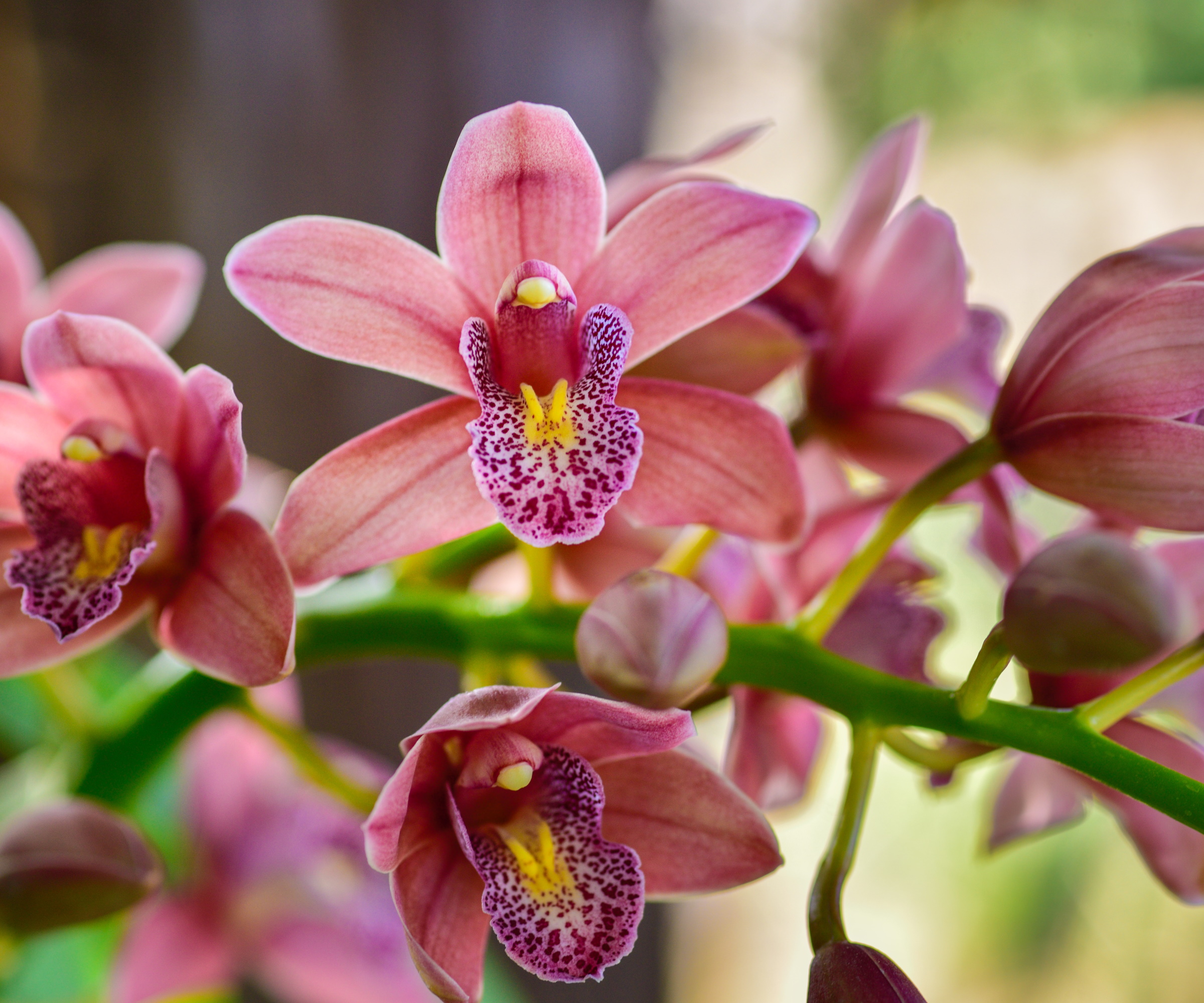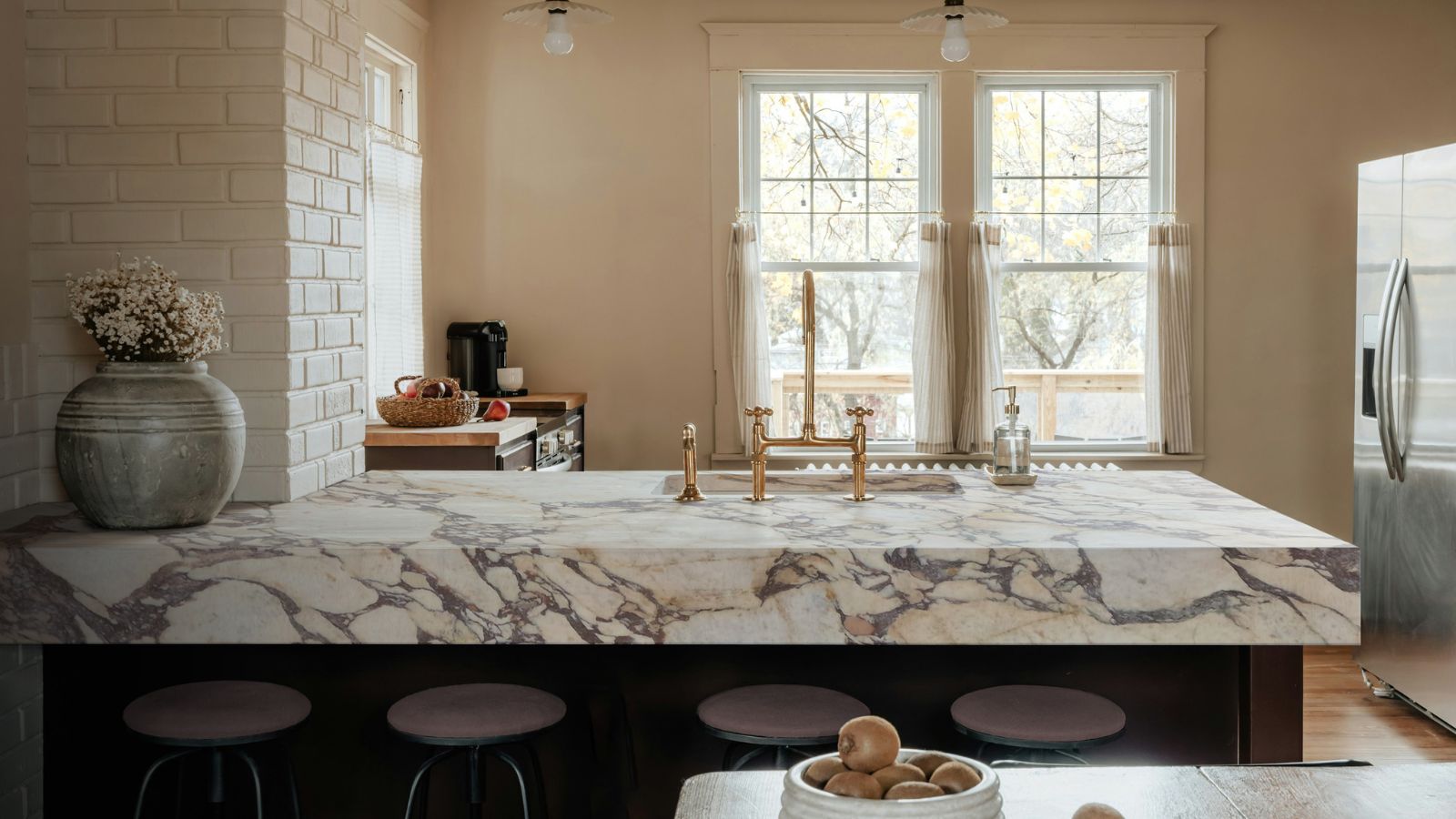Can you grow orchids outdoors? Experts share which types of orchids to choose and how to successfully grow them in your yard
With the right growing environment, many orchids can thrive in your backyard


Orchids have long been loved by indoor plant collectors. Their exotic flowers bring elegance and sophistication to interiors and they're perfect additions to different rooms in the home. But, have you ever considered you can grow them outdoors, too?
There are so many types of orchids, but the moth orchid (Phalaenopsis) is perhaps the most common choice for growing indoors. While moth orchids can be grown outdoors in certain climates at specific points in the year, there are some other hardier varieties that are better suited to outdoor environments. In fact, you can categorize orchids as cold-growing and warm-growing to better understand where they can grow.
While it's important to research specific orchid care required for the one you want to grow outdoors, including whether it can grow well in your local climate, there are a few general points to keep in mind when trying to grow orchids outdoors, too. Here, we've broken down everything you need to know about how to grow orchids outdoors, including which types can grow where.

Which orchids can grow outdoors?
When you think of an orchid's native environment, tropical forests probably come to mind. While it's true that many orchids do come from humid climes, it may surprise you to know there are also some orchids native to cooler regions. In fact, orchids can be found growing on every continent except Antarctica.
Cool-growing orchids

Cool-growing orchids are those that grow best in cooler temperatures. They shouldn't be mistaken for cold-growing or frost-hardy plants, as they will struggle in very cold and freezing climates.
'Cool-growing orchids are more challenging to cultivate at home since they tend to require winter temperatures of 39-42ºF and cool summer nights of 50-53ºF to promote blooming,' explains Halina Shamshur, botany expert at Plantum.
Some types of cool-growing orchids include:
- Miltoniopsis
- Masdevallia
- Rossioglossum
- Cymbidium
- Some Coelogyne, Laelia, Lycaste species

Halina Shamshur is a resident plant expert for the Plantum app, which helps users identify plant species, diagnose their conditions, and get specific care advice. Halina has 25+ years of experience as a professional botanist and 5 years of experience consulting on botany-related topics for Plantum.
Warm-growing orchids

In contrast to cool-growing orchids, warm-growing orchids thrive in humidity and higher temperatures.
'Warmth-loving orchids thrive in winter temperatures no lower than 61ºF,' Halina says.
Some popular varieties include:
- Phalaenopsis
- Maxillaria
- Vanda
- Ludisia
- Variegated Paphiopedilum
There are also orchids that have a dormancy period, which Halina notes prefer winter temperatures between 53-59ºF. This includes Cattleya, Oncidium, and Laelia.
How to grow orchids outdoors
Even with a better understanding of cool and warm-growing orchids and which can grow in your region's temperatures, it's always worth researching the growing requirements of the specific orchids you're planning to grow in your yard. With that in mind, here are some basics to follow when attempting to grow orchids outdoors:
Where to grow orchids in your yard

- Temperature: As previously mentioned, different orchids will thrive in different temperatures. This determines which orchids can grow in your yard at what point in the year. Take some time to understand your US hardiness zone and keep an eye on local forecasts to determine which orchids will thrive in your yard. You can also use this outdoor thermometer from Amazon to observe temperatures. In some cases, you may be able to bring orchids outdoors during the warmer months and then bring them indoors for fall and winter.
- Position: When thinking about where to place your orchid in your yard, consider the amount of light they will receive. 'Areas with bright, indirect light tend to be best,' says Carmela de Castro, owner of Orchid Republic Floral Boutique, a luxury florist based in California. With such delicate petals and foliage, many orchids experience leaf scorch in a direct light position. Likewise, you might opt for somewhere with shelter to protect your outdoor orchid from strong winds: 'Areas like the porch, the patio, under a tree, or even in a greenhouse,' Carmela says. Something to also consider is whether your orchid is an epiphytes, identifiable by aerial roots. Epiphytic orchids naturally grow on other plants, like the bark of trees, rather than in soil. Some examples include Phalaenopsis and Vanda orchids. 'To mimic this at home, orchids are often grown in special substrates made of tree bark and filler materials,' explains Halina. 'They can also be mounted on wood blocks, placed in baskets, or potted,' she adds. Try using this fibre board from Amazon to mount your orchids and display them in your yard.

Carmela is the owner of Orchid Republic Floral Boutique, a luxury florist with boutiques in Sherman Oak and Santa Monica, California. She specialises in bespoke flower arrangements, orchids and succulents.
How to care for orchids outdoors

- Watering: Watering orchids can be tricky and doing it incorrectly is a common indoor plant mistake that often leads to fading blooms. 'While orchids are hardy plants that can tolerate short droughts, they still need regular watering to thrive,' Halina says. 'Insufficient moisture can result in weak, underdeveloped shoots,' she adds. Of course, when you grow orchids outdoors, they will also be watered by rain. A hack to knowing when to water your epiphytic orchids is observing their roots; if they appear silver, it's time to water, while green roots indicate a happy moisture level. 'During the colder months, reduce watering,' Carmela advises. When orchids aren't actively growing, they require less water and overwatering can lead to orchid root rot and kill the plant.
- Humidity: Another thing that will help orchids thrive outdoors is higher humidity levels. While there are quite a few ways to increase humidity for indoor plants, it can be a bit more challenging in an outdoor environment that isn't naturally humid. This is where a greenhouse can be helpful. Alternatively, Halina recommends getting your hands on a plant mister (from Amazon). 'In dry conditions, misting the leaves can help increase humidity. For species like Vanda that grow without soil, daily misting of the roots is especially important,' she explains.
- Fertilizing: 'For abundant blooming, orchids need regular feeding with specially formulated liquid fertilizers,' Halina says. To fertilize orchids outdoors, opt for liquid orchid fertilizer (available at Walmart) and apply when watering orchids. 'Fertilize every seven to twelve days during the growing season, depending on the species,' Halina advises. Like watering, you should reduce feeding in winter. 'As the plant's growth slows down, the plant's essential nutrient needs also decreases,' Carmela explains.
FAQs
Do orchids need overwintering?
While orchids are largely grown as indoor plants, it is possible to grow different types of orchids outdoors in certain climates. The majority of orchids need to be protected from frost as the cooler months settle in.
'In cooler climates, orchids can stay outdoors only between June and September. The rest of the year, they must stay indoors to avoid frost damage,' advises Halina Shamshur, botany expert at Plantum. This isn't necessarily the same as overwintering a garden in the traditional sense, but bringing orchids indoors for winter and growing them as houseplants will help keep them healthy through the coldest time of year.
Just remember that it's essential to research and meet the growing requirements of the specific type of orchid you're growing in your yard. However, these points should be taken into consideration for all orchids and will help you add these exotic blooms to your garden planting.
If you're a big fan of orchids and keen to find other unique ways to grow them, try growing orchids in water or making an orchid terrarium.
Sign up to the Homes & Gardens newsletter
Design expertise in your inbox – from inspiring decorating ideas and beautiful celebrity homes to practical gardening advice and shopping round-ups.

Tenielle is a Gardens News Writer at Homes & Gardens. She holds a qualification in MA Magazine Journalism and has over six years of journalistic experience. Before coming to Homes & Gardens, Tenielle was in the editorial department at the Royal Horticultural Society and worked on The Garden magazine. As our in-house houseplant expert, Tenielle writes on a range of solutions to houseplant problems, as well as other 'how to' guides, inspiring garden projects, and the latest gardening news. When she isn't writing, Tenielle can be found propagating her ever-growing collection of indoor plants, helping others overcome common houseplant pests and diseases, volunteering at a local gardening club, and attending gardening workshops, like a composting masterclass.
-
 5 seasonal items you should always clean before storing – cleaning experts reveal it's crucial for preventing mold, musty odors, and pests
5 seasonal items you should always clean before storing – cleaning experts reveal it's crucial for preventing mold, musty odors, and pestsIt’s a must to keep them safe, experts warn
-
 Marble kitchen countertops are a luxurious choice, but are they practical? I asked designers and kitchen experts whether they are form over function
Marble kitchen countertops are a luxurious choice, but are they practical? I asked designers and kitchen experts whether they are form over functionThe pros and cons, care tips, and styling advice designers say you need to know